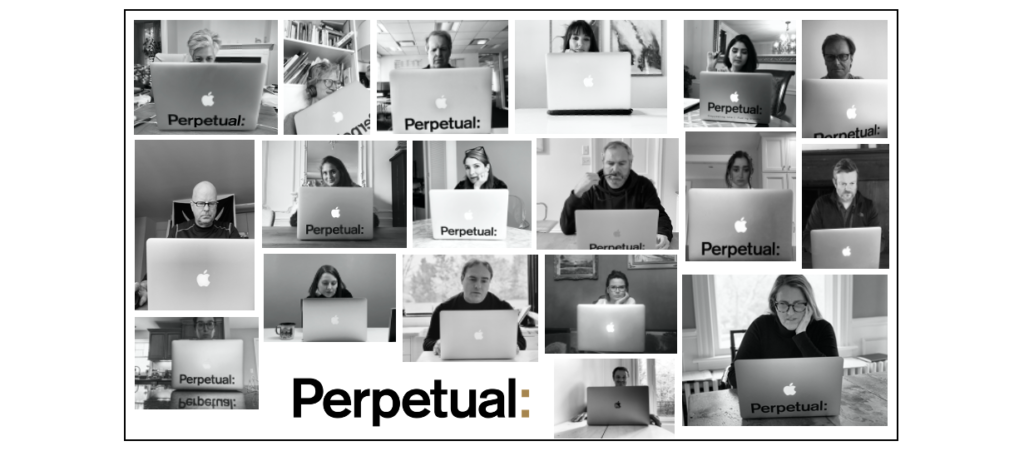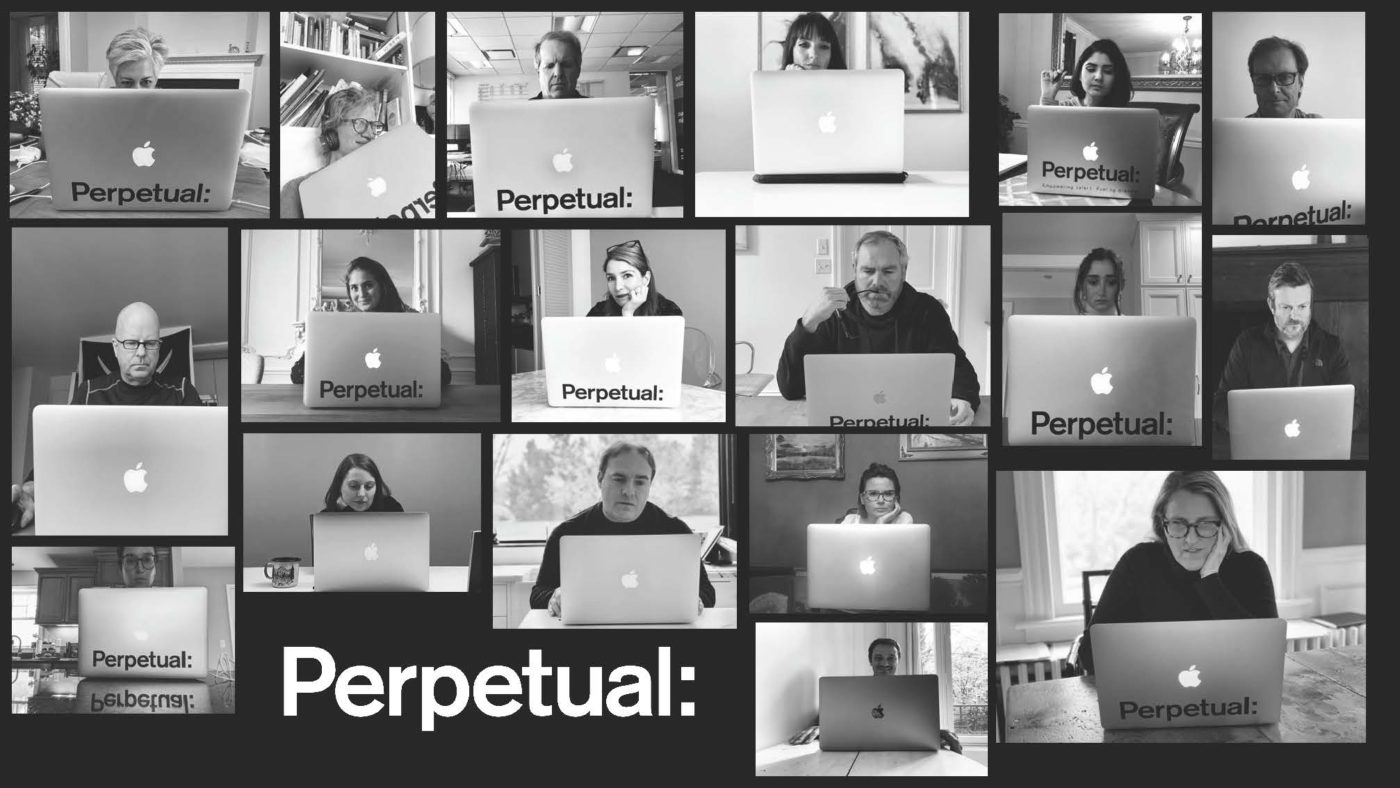As the CEO and Founder of Perpetual (a leading talent advisory firm), I thought I would put pen to paper about adapting to the new normal – working 100% remotely through this unique set of circumstances.
For all teams (even high-performing ones), the coronavirus has created great uncertainty, elevated stress and anxiety levels commensurately and prompted tunnel vision – in which we naturally focus solely on the present rather than towards the future.
Our new normal – heightened by the ‘remote’ – focuses us on a responsibility to communicate often, provide clarity, build resilience and reimagine for the future.
For all leaders, there is a need to sustain the energy and engagement of our teams – today and beyond. This has always been a leadership challenge of course (one that many large organizations struggle with) – it has just now taken on an increased urgency – due to the backdrop uncertainty.
As business leaders, we need to support our employees with the means to operate successfully in this remote environment, enable our teams to connect more effectively, and provide our organizations with the tools required to flourish in this new world order.
Leaders in this ‘new normal’ have a role in helping team members navigate through these combined set of challenges.
So how do we do this?
First, we must know ourselves; secondly, we must know our people as individuals and, finally, we must understand what moves and motivates them collectively.
For all three of these factors, science (and well-established research) is our friend.
We know that if our own mindsets are ‘fixed,’ it will be near-impossible to move our people to a better place. Self-care is, therefore, paramount; along with the self-awareness to understand our own emotions and reconcile them before engaging our team members.
It is worth reflecting that “social pain”, caused by elements such as fear and anxiety, impacts our brain in a similar way as physiological pain, promoting a self-doubt that can ultimately paralyze effective decision-making.
Understanding the implications of this point – with respect to each individual in our team – is the foundation for contingent communication and leadership actions.
With respect to the third factor – perhaps paradoxically – the pandemic appears to have sparked a ‘coming together’ of sorts that sparks a new level of hope for collective human endeavor – serving, hopefully, to inspire many of us to even nobler futures.
Communication, trust, and clarity are key
Communication is – as always – absolutely key: giving team members the information they need, helping people feel safe and connected to a deeper sense of purpose and stability.
As business leaders, we need to maximize an appropriate ‘presence’ and provide certainty. We know uncertainty breeds anxiety, anxiety leads to fear, and fear leads to the dark side (was that Yoda?).
Trust is also key. Team’s do not function without trust in the leader and, ultimately, with one another. Leaders must provide good intentions and sound character; remembering that the key to trust is vulnerability and role-modeling. One of our client leaders noted recently that their team has never been stronger and more connected – admitting that this would not potentially have been the case – were it not for the pandemic.
Providing clear direction through this crisis is equally paramount – and the repetitive articulation of our overarching ‘aim’ is where any clarity starts. We have to deliver the ‘what?’ (the action that must be taken – connecting to the rational part of the brain) and the ‘why’ (giving everyone the context that serves to mobilize them – connecting to the emotional part of the brain).
In a time of crisis when delivering the ‘aim’ of our firm we must not assume this is clear to everyone immediately. The need to check in, clarify and re-clarify ensures everyone is on the same page. We need to explore what success will look like when we achieve the aim. Great teamwork stems from this clarity and subsequent objective setting, strong communication and a positive attitudeis founded on this bedrock.
It is worth noting that remote working rituals – that structure how we operate together – often provides such clarity and a sense of certainty in these, otherwise, uncertain times. In such regular sessions, leaders have a chance to demonstrate empathy and respect for their team colleagues by understanding the individual work/home scenarios and drafting a structured work week to flexibly accommodate such real-world constraints.
As leaders, we need to instill resilience in our team members and tap into their sources of hope, trust, and optimism in order to unlock creativity and build momentum for the future.
Remote team meetings, sharing positive sentiments and encouraging a sense of community will be critical elements in building that momentum. Celebrate the positives. Win often. Sharing positive stories, and creating uplifting moments, are important building blocks in reigniting resilient spirits.
Adapt or die
At Perpetual, we are highlighting how we are responding to the crisis with success stories about how we are adapting to new ways of working; for example, more client deliveries in Talent Development than Talent Acquisition due to changes in demands and circumstances of our clients. We provide greatest stability when we maintain regular touchpoints with our team – both individually and collectively. These connections also provide the best opportunity to demonstrate trust, compassion and hope: all the core ingredients that keep people engaged with a sense of team-belonging.

At Perpetual, our core purpose is “Progressing People’s Professional Lives” and we have been doing this by supporting our clients, and their employees, with remote workshops, engaging and accelerating their teams through webinar deliveries and running remote team simulations.
This innovative pivot in our offering – aligned to our purpose – has been extremely rewarding to undertake. Especially so, as our clients are finding they can’t just push the pause button on capability building so the shift has to move towards such remote learning.
We are also increasingly supporting senior client leaders with their own digital delivery initiatives. These include discussion boards and guided participant journeys that focus on cohorts undertaking a program collectively together rather than as individuals working to their own schedule. Facilitation of such remote cohort groups drives engagement, connectivity and focused application.
Interestingly, we have found ourselves challenged to ‘step up our game’ in order to promote a level of engagement remotely that gets somewhere close to ‘in person’ delivery. You never quite get completely there (perhaps thankfully!) but we have certainly innovated in ways that we never would have pre-imagined. In this process of our own self-discovery – seeing the successes and results of this new mode of working – has renewed our confidence in our ability to drive value for our client partners.
This new ‘remote’ way of working has also provided a strange amount of uncommon, distraction-free concentration time. This has given us the opportunity to focus on professional activities that push our cognitive capabilities to their limit. These efforts are creating new value, improving our skills and helping us reimagine for the future. At an individual level, it has provided a rare period of time to actually ‘get stuff done’ – over above the daily routine of commuting, emails, meetings, minute-by-minute firefighting etc.
In this unique situation, the premier firms and teams will truly differentiate themselves – not least as a result of creating additional intellectual assets on which future value can be mounted. At Perpetual, by example, we find ourselves developing pieces of research, thought leadership, new service methodologies and innovative content/products of specific relevance to our clients.
The coronavirus has certainly forced both the pace and scale of such workplace innovation. As we are all forced to do more with less, we are striving to find better, simpler, less expensive, and faster ways to operate.
Rising to the challenge
In final analysis, the move to the ‘new normal’ is challenging.
Many employees describe everyday feelings across the full emotional gambit: scared, overwhelmed, optimistic, helpless, stretched, anxious and hopeful – among others; but, just sharing how we are all feeling – that common ground – is a powerful starting point for this new world.
Stepping back, gaining self-awareness, understanding our people and showing authentic empathy for our colleagues: this all provides the connected-together base from which we can all face tomorrow.










